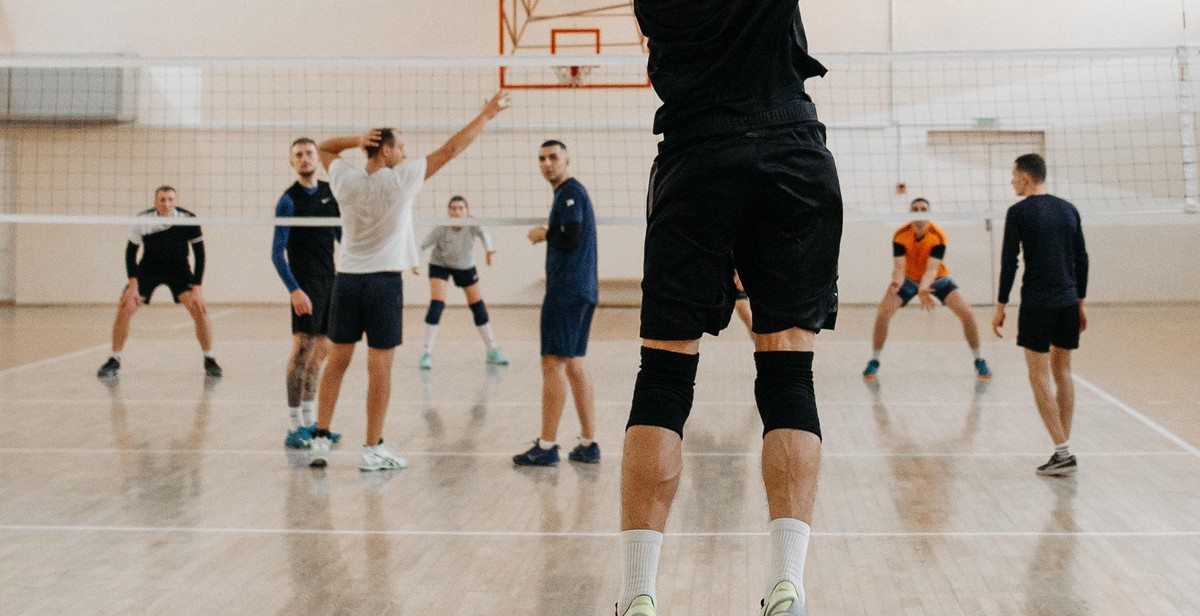Introduction: How to Serve a Volleyball
As a seasoned volleyball player, I know firsthand the importance of serving in the game. A well-executed serve can set the tone for the entire match, and a poorly executed one can result in lost points and momentum. Serving is not just about hitting the ball over the net, but it requires a combination of techniques and strategies to make it effective.
In this article, I will share my personal experience and expertise on how to serve a volleyball effectively. I will cover the different types of serves, such as the jump serve, float serve, and topspin serve. I will also discuss the proper footwork, body positioning, and arm swing required for a successful serve.
The Importance of a Good Serve
A good serve can put the opposing team on the defensive, making it harder for them to set up their offense. It can also force them to make errors, leading to easy points for your team. A well-placed serve can also disrupt the other team’s communication, causing confusion and hesitation.
On the other hand, a poor serve can give the opposing team an easy point, allowing them to gain momentum and confidence. It can also put pressure on your own team, leading to mistakes and missed opportunities.
What You’ll Learn in This Article
In this article, you’ll learn:
- The different types of serves and when to use them
- The proper footwork, body positioning, and arm swing for a successful serve
- Strategies for serving to specific areas of the court
- How to stay calm and focused while serving under pressure
By the end of this article, you’ll have the knowledge and skills to serve a volleyball effectively and confidently. Let’s get started!

The Basics of Serving a Volleyball
Serving is the most important skill in volleyball, as it is the only skill that the serving player has control over. A good serve can put the opposing team on the defensive, while a bad serve can give the other team an easy point. Here are the basics of serving a volleyball:
Understanding the Different Types of Serves
There are three main types of serves in volleyball: the underhand serve, the jump float serve, and the jump topspin serve. The underhand serve is the easiest and most commonly used serve, while the jump float serve and the jump topspin serve require more technique and practice.
Proper Stance and Body Positioning
Before serving, it is important to have the correct stance and body positioning. Start by standing with your feet shoulder-width apart, with your non-dominant foot slightly in front of your dominant foot. This will help you maintain balance and generate power. Keep your knees slightly bent and your weight on the balls of your feet, with your body leaning forward slightly. Your non-dominant arm should be extended out in front of you, while your dominant arm should be raised above your head, ready to make contact with the ball.
The Importance of Ball Toss
The ball toss is one of the most important aspects of serving. A good toss will help you generate power and accuracy, while a bad toss can lead to a missed serve or a weak serve. To toss the ball, place it in your non-dominant hand and hold it slightly above your head. Use your non-dominant hand to guide the ball up and out in front of you, while your dominant hand swings back to generate power. The ball should be tossed high enough to give you time to approach and make contact with it at the highest point possible.
By understanding the different types of serves, having the proper stance and body positioning, and mastering the ball toss, you can improve your serving skills and become a valuable asset to your team.

Techniques for Effective Volleyball Serves
One of the most important skills in volleyball is serving. A great serve can put your team on the offensive, while a weak serve can give your opponent an easy point. There are three main types of serves: the floater, the topspin, and the jump serve. Each serve requires different techniques and strategies to be effective.
Mastering the Floater Serve
The floater serve is a low-speed serve that is difficult for the receiver to predict. To execute a floater serve, stand with your feet shoulder-width apart and toss the ball high enough to hit it on the way down. Contact the ball with the heel of your hand and follow through with your arm. The goal is to hit the ball with a flat surface, causing it to wobble in the air and making it difficult for the receiver to pass.
Perfecting the Topspin Serve
The topspin serve is a high-speed serve that dips quickly over the net. To execute a topspin serve, toss the ball high and hit it with a closed fist, snapping your wrist forward at the point of contact. This will create topspin on the ball, causing it to drop quickly over the net and making it difficult for the receiver to return.
Dominating with the Jump Serve
The jump serve is the most powerful serve in volleyball, but also the most difficult to execute. To execute a jump serve, start with a running start and jump as you toss the ball. Hit the ball at the highest point of your jump with a topspin or floater technique. The goal is to hit the ball with power and accuracy, making it difficult for the receiver to pass.
| Type of Serve | Speed | Difficulty | Effectiveness |
|---|---|---|---|
| Floater | Low | Easy | Unpredictable |
| Topspin | High | Moderate | Powerful |
| Jump | Very High | Difficult | Dominant |
By mastering the floater, perfecting the topspin, and dominating with the jump serve, you can become a valuable asset to your team and help lead them to victory.

Strategies for Effective Volleyball Serves
When it comes to serving a volleyball, it’s not just about getting the ball over the net. A successful serve can disrupt the opponent’s offense and give your team an advantage. Here are some strategies to consider:
Targeting specific areas of the court
One way to throw off the opponent’s offense is by targeting specific areas of the court with your serve. Aim for the weaker players on the other team or serve to areas where they are less likely to pass the ball effectively. For example, if you notice that the opposing team’s setter is struggling, aim for them with your serve to make it harder for them to set up their hitters.
Disrupting the opponent’s offense
Serving can be a powerful tool for disrupting the opponent’s offense. By serving aggressively, you can force the other team to make mistakes and give your team an opportunity to score. Try mixing up your serves with different speeds, spins, and placements to keep the other team off balance. If the other team is struggling to pass your serve, keep serving to the same area to make it even harder for them to recover.
Working with your team
Serving is not just an individual effort – it’s also important to work with your team to create a cohesive strategy. Communicate with your teammates about where you plan to serve and what type of serve you will use. This can help them anticipate the play and be ready to make a play on the ball. Additionally, if you notice that the other team is struggling with a particular serve, share that information with your team so they can adjust their positioning and be ready to capitalize on the opportunity.
Conclusion
By targeting specific areas of the court, disrupting the opponent’s offense, and working with your team, you can serve a volleyball with greater effectiveness and help your team gain an advantage on the court.

Conclusion
Mastering the art of serving in volleyball takes time and practice. However, with the right techniques and strategies, you can serve effectively and help your team win more games. Remember to:
- Focus on your form and technique
- Practice different types of serves
- Use your body and legs to generate power
- Pay attention to your target and aim
- Communicate with your teammates
By putting all of these tips together, you can become a formidable server and help lead your team to victory. Don’t be afraid to experiment with different serves and find what works best for you. With dedication and hard work, you can become a master at serving in volleyball.
| Key Point | Description |
|---|---|
| Technique | Focus on proper form and technique to improve your serves |
| Types of Serves | Experiment with different types of serves to find what works best for you |
| Generating Power | Use your body and legs to generate power for your serve |
| Aiming | Pay attention to your target and aim for accuracy |
| Communication | Communicate with your teammates to ensure everyone is on the same page |
Remember, serving is a crucial part of the game and can make all the difference in winning or losing a match. Keep practicing and refining your skills, and you’ll be sure to make a significant impact on the court.
